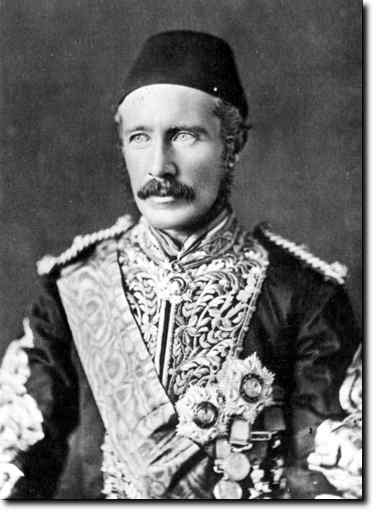VICTORIAN ERA BUST OF GENERAL GORDON OF KHARTOUM
HISTORY
MAJOR GENERAL Charles George Gordon CB (28 January 1833 – 26 January 1885), also known as Chinese Gordon, Gordon Pasha, and Gordon of Khartoum, was a British Army officer and administrator. He saw action in the Crimean War as an officer in the British Army. However, he made his military reputation in China, where he was placed in command of the "Ever victorious Army", a force of Chinese soldiers led by European officers which was instrumental in putting down the Taiping Rebellion, regularly defeating much larger forces. For these accomplishments, he was given the nickname "Chinese Gordon" and honours from both the Emperor of China and the British. He entered the service of the Khedive of Egypt in 1873 (with British government approval) and later became the Governor General of the Sudan, where he did much to suppress revolts and the local slave trade. He then resigned and returned to Europe in 1880.
A serious revolt then broke out in the Sudan, led by a Muslim religious leader and self-proclaimed Mahdi, Muhhamed Ahmad. In early 1884, Gordon was sent to Khartoum with instructions to secure the evacuation of loyal soldiers and civilians and to depart with them. In defiance of those instructions, after evacuating about 2,500 civilians, he retained a smaller group of soldiers and non-military men. In the months before the fall of Khartoum, Gordon and the Mahdi corresponded; Gordon offered him the Sultanate of Kordofan and the Mahdi requested Gordon to convert to Islam and join him, which Gordon declined. Besieged by the Mahdi's forces, Gordon organised a citywide defence that lasted almost a year and gained him the admiration of the British public, but not of the government, which had wished him not to become entrenched there. Only when public pressure to act had become irresistible did the government, with reluctance, send a releif force. It arrived two days after the city had fallen and Gordon had been killed.
Gordons death
The manner of Gordon's death is uncertain, but it was romanticised in a popular painting by George William Joy — General Gordon's Last Stand (1893, currently in the Leeds City Art Gallery), and again in the film Khartoum (1966) with Charlton Heston as Gordon. The most popular account of Gordon's death was that he put on his ceremonial gold-braided blue uniform of the Governor-General together with the Pasha's red fez and that he went out unarmed, except with his rattan cane, to be cut down by the Ansar. This account was very popular with the British press as it contained much Christian imagery with Gordon as a Christlike figure dying passively for the sins of all humanity.
Gordon was apparently killed at the Governor-Generals's palace about an hour before dawn. The Mahdi had given strict orders to his three Khalifas not to kill Gordon. The orders were not obeyed. Gordon's Sudanese servants later stated that Gordon for once did not go out armed only with his rattan cane, but also took with him a loaded revolver and his sword, and died in mortal combat fighting the Ansar.
Gordon died on the steps of a stairway in the northwestern corner of the palace, where he and his body servant, Agha Khalil Orphali, had been firing at the enemy. Orphali was knocked unconscious and did not see Gordon die. When he woke up again that afternoon, he found Gordon's body covered with flies and the head cut off.


ITEM DESCRIPTION
Hollow bronzed spelter (zinc alloy) bust of Major General Charles Gordon (1833-85), called Gordon Pasha, in military attire. Spelter was used from the 1860s, instead of bronze, to cast inexpensive objects (sculpture, clock cases, etc) for consumers. cast in foot lower centre: GENERAL GORDON PASHA cast in rear of foot lower right: PAUL MITTON / LONDON. Height approx 330mm x 200mm wide.
This is a nice desktop size.